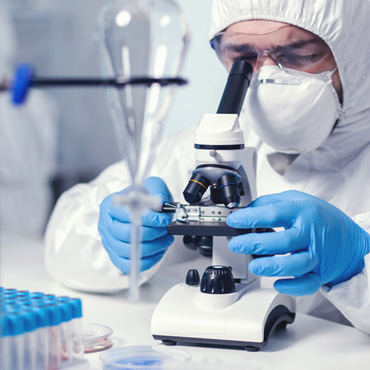Orthopaedics - Stem Cell Treatments
The use of Stem Cells (Induced Pluripotent Stem Cells (iPSCs) or Mesenchymal (MSCs) in the treatment of orthopaedic conditions is an area of active research and current therapeutic approaches and treatments.
Induced pluripotent stem cell (iPSC) therapy involves the use of adult cells that have been reprogrammed to revert to a pluripotent state, similar to embryonic stem cells. This groundbreaking technology allows for creating of patient-specific stem cells without needing embryonic stem cells or immune-matched donors. iPSCs hold great promise for the future of regenerative medicine, with potential applications in treating numerous diseases, including Parkinson's disease, diabetes, and heart disease.
While specific treatments using iPSCs for diabetes are still in the experimental stage, here are some ways iPSCs could be utilized:
a.) Osetoarthritis:
Stem cells, particularly mesenchymal stem cells (MSCs), are being investigated for their potential in regenerating damaged cartilage and treating osteoarthritis. MSCs can be isolated from various sources, such as bone marrow or adipose tissue, and can be delivered to the affected joint to promote cartilage repair and reduce inflammation.
b.) Bone Fractures & Defects:
Stem cells, including MSCs, have the ability to differentiate into bone-forming cells (osteoblasts). They can be utilized in bone grafting procedures to enhance bone healing and promote the regeneration of bone tissue in cases of fractures, non-unions, or large bone defects. Additionally, stem cells can be combined with scaffolds and growth factors to optimize bone regeneration.
c.) Tendon and Ligament Injuries:
Stem cells have shown potential for the treatment of tendon and ligament injuries. They can be injected or surgically implanted into the injured site to stimulate the regeneration and repair of damaged tendon or ligament tissue. MSCs can promote the formation of new collagen fibers and enhance the healing process.
d.) Spinal Conditions:
Stem cells are being explored for their potential in treating degenerative spinal conditions such as degenerative disc disease and disc herniation. MSCs can be used to regenerate intervertebral discs by promoting the growth and restoration of disc cells and extracellular matrix components. This approach aims to alleviate pain, restore disc height, and improve spinal function.
e.) Joint Injuries and Conditions:
Stem cells have shown promise in the treatment of various joint injuries and conditions, such as meniscal tears, labral tears, and avascular necrosis. By injecting stem cells directly into the joint or using them in conjunction with surgical procedures, they can promote tissue repair, reduce inflammation, and potentially delay or avoid the need for joint replacement surgery.
Muscle Injuries and Disordres:
Stem cells, including muscle-derived stem cells, can contribute to the regeneration and repair of injured or damaged muscle tissue. They may be utilized in the treatment of muscle injuries, muscular dystrophy, and other muscle-related disorders to enhance muscle regeneration, improve strength, and restore function.
Efficacy Goals in Treating Orthopaedic Conditions With Stem Cells
The efficacy goals of treating orthopaedic conditions with stem cells vary depending on the specific approach being targeted. Here are some common efficacy goals in the context of stem cell treatment for orthopaedic conditions:
- Pain Reduction: A primary goal in orthopedic treatments is to alleviate pain associated with the condition. Stem cell therapies aim to reduce pain by promoting tissue repair, reducing inflammation, and improving overall joint or tissue function. Pain reduction allows for improved mobility and enhanced quality of life.
- Tissue Regeneration and Repair: Stem cell therapies seek to promote tissue regeneration and repair in orthopedic conditions. The goal is to enhance the body's natural healing processes and facilitate the restoration of damaged bone, cartilage, tendons, ligaments, or other musculoskeletal tissues. Regeneration and repair contribute to improved function, strength, and stability of the affected area.
- Improved Joint Function: Stem cell treatments aim to improve joint function in orthopedic conditions such as osteoarthritis or joint injuries. The goal is to enhance range of motion, reduce stiffness, and improve joint stability. Improved joint function allows for better mobility and reduces limitations in daily activities.
- Prevention of Disease Progression: In degenerative conditions like osteoarthritis, one of the efficacy goals is to slow down or halt disease progression. Stem cell therapies aim to mitigate further damage to the affected joint or tissue, delay the need for more invasive interventions (e.g., joint replacement), and potentially improve long-term outcomes.
- Reduced Inflammation: Inflammation is often associated with orthopedic conditions and can contribute to pain and tissue damage. Stem cell therapies aim to modulate the inflammatory response, reducing inflammation in the affected area. By controlling inflammation, stem cell treatments can help promote healing and tissue regeneration.
- Long-Term Benefits: Stem cell therapies aim to provide long-term benefits beyond immediate symptom relief. The goal is to achieve sustained improvements in pain reduction, tissue repair, and functional outcomes. Long-term benefits can minimize the need for repeat treatments or interventions, enhancing patient convenience and overall treatment success.
- Safety and Minimization of Side Effects: Ensuring patient safety is a crucial efficacy goal in any orthopedic treatment, including stem cell therapies. The treatment should have minimal side effects, and adverse events should be minimized. Safety considerations include the avoidance of immune reactions, infections, or other complications associated with the treatment.



